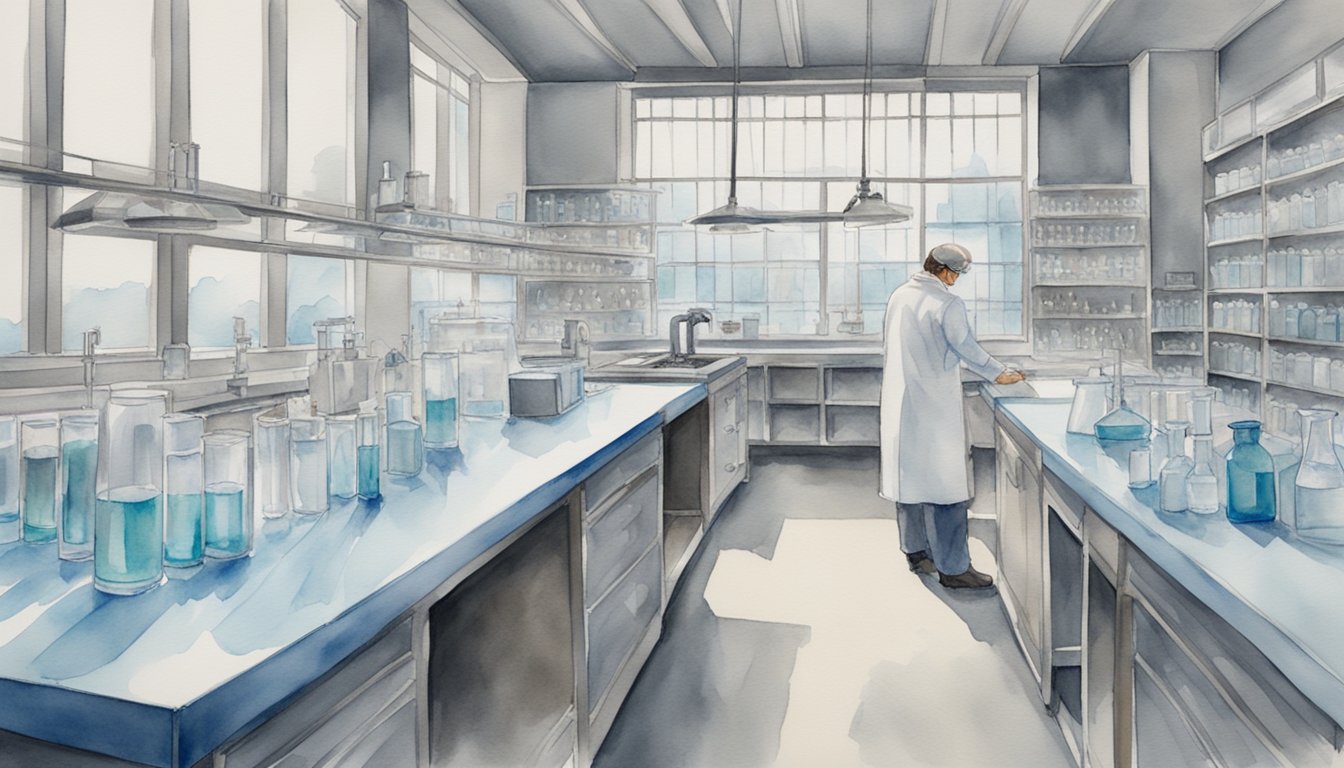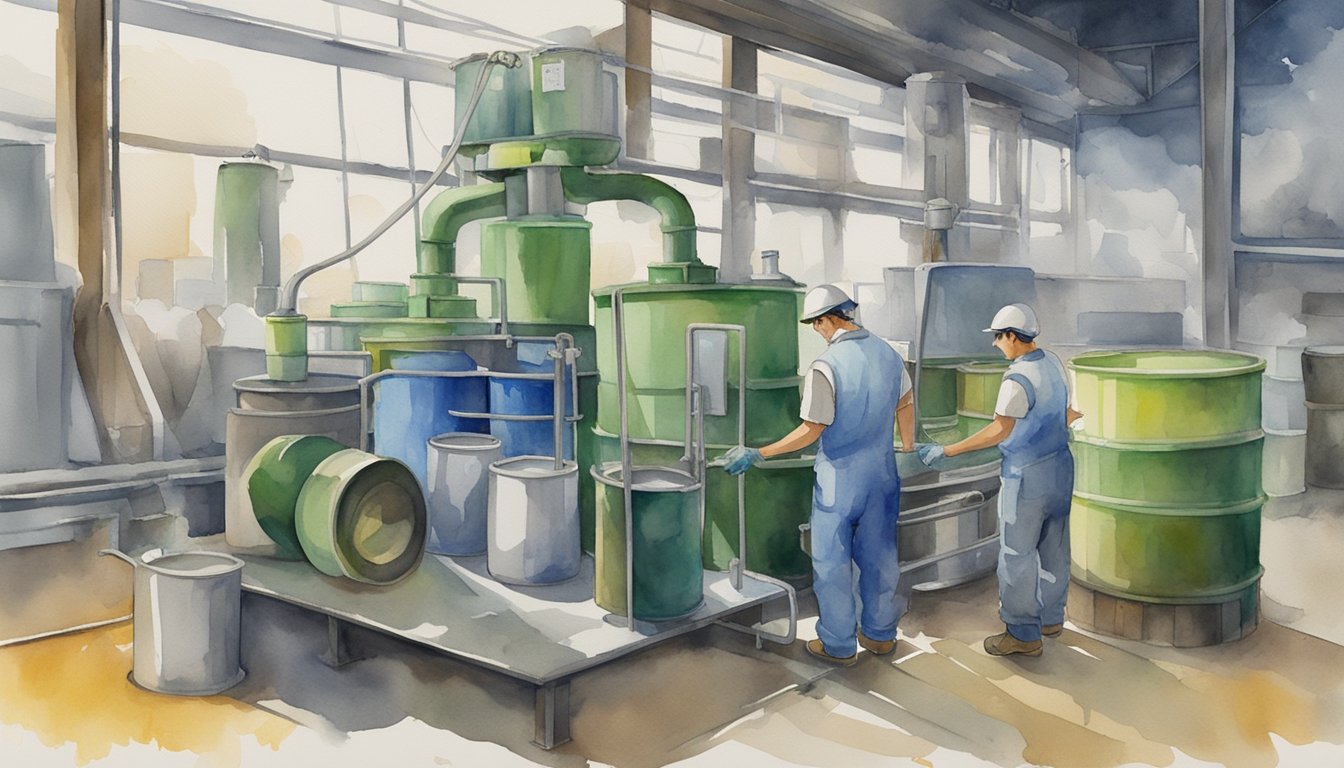Your approach to solvent preparation should consider both the chemical nature of the samples and the operational requirements of an LC-MS system. Various properties create trade-offs depending on the parameters of your testing goals, and finding the right balance between your equipment and sample requires tailoring solvent mixtures for the best results. Despite the many challenges that could arise during an analysis, many can be controlled with the right tools and knowledge regarding solvent preparation.
Solvent Selection for LC-MS
Solvent preparation requires understanding the dynamics between chemical properties and how they promote ionization needed for a LC-MS analysis. Solvent composition may also directly influence the reliability and longevity of the equipment needed for instrumentation. Solvent incompatibility may cause damages and affect the accuracy of mass spectrometry data. Before choosing your solvents, be sure to check their compatibility with your method’s requirements. This includes the following considerations:
-
Compatibility with stationary phase and column materials
-
Viscosity and pressure needs for pumps and injectors
-
pH stabilizers with appropriate additives and buffers
-
Avoidance of high salt concentrations
-
Solvent purity and grade
For example, organic solvents like acetonitrile and methanol are commonly used due to their low viscosity and high solvating power. High salt concentrations may create precipitation and cause clogging within a system. Incorrect viscosity of a solution could create backpressure and other adverse effects.
Solvent purity can make or break results in LC-MS due to the impurities that can contaminate analytes and meddle with peaks and resolutions. For these reasons, LC-MS grade solvents are ideal choices for minimal impurities with contaminants as low as a few parts per billion.
Monitor for degradation, which can affect performance. Regular quality checks on solvent purity will support consistent and accurate analyses. Be vigilant for new batches of solvents, as purity might vary between batches. Filtration techniques and proper storage protocols are additional ways to guarantee purity and minimize risks associated with environmental contaminants.
Organic Solvents
Organic solvents are typically used for dissolving compounds that are not water-soluble. They also facilitate ionization efficiency needed for LC-MS analysis with ideal properties for carrying analytes within a mobile phase through a chromatography column and separating molecules without irreversible damages. Choosing an organic solvent like acetonitrile and methanol is common due to their high volatility, high boiling points, ideal viscosity, and ability to promote efficient ionization with many complex mixtures. Acetonitrile offers excellent chromatographic resolution and a low UV absorbance, making it ideal for trace analysis while using UV detectors. Methanol features a high boiling point for minimal evaporation, and its hydrogen capacity contributes to improved peak shapes.
Aqueous Solutions
Samples that are hydrophilic typically use aqueous solutions with a combination of organic solvents to create a gradient to aid in separating analytes. LC-MS grade water is a primary component in aqueous solutions due to its ideal polarity that offers a medium for many solvents, buffers and other additives while maintaining purity requirements needed for LC-MS. Buffered solutions can stabilize pH in water-based solutions, preventing fluctuations that may affect analyte retention or electrospray ionization.
Water-methanol or water-acetonitrile mixtures are widely used due to their suitable volatility and compatibility with electron-spray ionization techniques. Additionally, proper filtration of contaminants and degassing air bubbles in solvents are necessary steps to maintain system performance and avoid contamination.
Additives and Buffers
Additives and buffers are used to improve analyte concentration, separation, and detection. Formic acid and acetic acid are popular choices for enhancing ionization in positive mode, aiding protonation of analytes. Buffers like ammonium acetate can be used for maintaining consistent pH levels.
The concentration of additives should be carefully calibrated to prevent ion suppression, which can diminish detection sensitivity. Always consider the volatility and chemical properties of these compounds with your chosen solvents to avoid unwanted reactions. Each buffer and additive selected should be evaluated for its impact on the overall system performance and analyte behavior during LC-MS analysis.
Optimizing Solvent Properties
When preparing solvents for LC-MS, several properties come into play. Focus on balancing pH levels, viscosity, and forming precise gradients that may significantly impact performance and reproducibility.
Adjusting Solvent pH
Adjusting the pH of a solvent directly impacts ionization and separation efficiency. Precise pH control minimizes ion suppression and improves sensitivity and peak shapes.
Compatible buffers like ammonium formate or ammonium acetate are common ways to adjust pH levels. Formic acid and acetic acid also may be applied depending on the sample conditions. Their concentrations may need adjusting to help keep pH within a recommended range, typically between 2 and 7 in positive mode, to maximize signal intensity. Regular calibration with pH meters helps guide accurate measurements and consistent results.
Controlling Solvent Viscosity
Solvent viscosity influences flow rate and pressure in LC-MS systems, which can be controlled by varying ratios of solvents within a solution. High viscosity can lead to increased system backpressure and potential damage to equipment components. Select solvents with suitable viscosity to maintain system stability. Consider using a combination of water and an organic solvent such as acetonitrile or methanol. The choice depends on the analysis method and desired separation resolution. Regularly check and adjust the solvent composition to meet your ideal viscosity.
Solvent Gradient Formation
Gradient methods determine the elution profiles and sensitivity of detection, especially when dealing with complex sample matrices that need adjustments throughout an analysis. Binary gradient systems mix two solvents in varying proportions to create precise mobile phase compositions. Pay close attention to the mixing ratios and flow rates for consistent gradient performance. Regular tuning of these parameters helps maintain the reliability of data quality and analytical outcomes.
Sample Preparation Techniques for LC-MS
In liquid chromatography-mass spectrometry (LC-MS), preparing solvents may require a combination of techniques, such as including filtration, degassing, proper mixing, and even special storage.
Filtration Methods
Solvent filtration removes particulate matter, which can clog the LC-MS system. Use membranes made of polyvinylidene fluoride (PVDF) or nylon with a pore size of 0.22 or 0.45 micrometers. Filter solvents before use and again after dilution or mixing.
Regularly inspect filters for defects to prevent contamination. Furthermore, use disposable filters to eliminate cross-contamination between different solvents. Implement a routine filtration protocol to maintain consistency.
Degassing Procedures
Degassing solvents prevents gas bubble formation, which can affect detector sensitivity and reproducibility. Gas-phase degassing methods like helium sparging or vacuum degassing can remove trapped gas bubbles. Helium sparging involves passing helium gas through the solvent, effectively removing dissolved gases. Vacuum degassing involves reducing pressure to release gases.
Automated degassers can offer convenient, continuous inline degassing. Implement these procedures based on your system's requirements and resources.
Mixing and Storage Considerations
Proper mixing creates a uniform composition within a solution, which involves calculating precise concentrations and ratios. When available, use mechanical mixers or invert containers multiple times to achieve thorough blending. Always mix freshly prepared solutions before use.
Store solvents in tightly sealed borosilicate glass bottles to prevent evaporation and contamination. Light-sensitive solvents should be stored in amber bottles. Rinse these bottles with the desired solvent before refilling to avoid any residual contamination. Only use 0.2 μm filters when filtration is applicable. Proper labeling with preparation dates monitors timely usage and can help prevent using expired solvents. Rely on these practices to maintain solvent integrity and quality throughout your analyses.
Validation Protocols
A typical protocol includes linearity, limit of detection, precision, and accuracy evaluations to validate your solvent preparation is correct with successful results. To complete a comprehensive validation, perform tests using standard solutions and compare results against known values. Real-time data monitors protocol effectiveness by identifying deviations promptly, a practice recommended for clinical mass spectrometry dealing with amino acids, protein identification, and biomarker validations from biological samples.
References:
[1] Nakayasu, E. S., Gritsenko, M., Piehowski, P. D., Gao, Y., Orton, D. J., Schepmoes, A. A., Fillmore, T. L., Frohnert, B. I., Rewers, M., Krischer, J. P., Ansong, C., Suchy-Dicey, A. M., Evans-Molina, C., Qian, W., Webb-Robertson, B. M., & Metz, T. O. (2021). Tutorial: best practices and considerations for mass-spectrometry-based protein biomarker discovery and validation. Nature Protocols, 16(8), 3737–3760. https://doi.org/10.1038/s41596-021-00566-6
[2] Woolf, E. J., McDougall, S., Fast, D. M., Andraus, M., Barfield, M., Blackburn, M., Gordon, B., Hoffman, D., Inoue, N., Marcelin-Jimenez, G., Flynn, A., LeLacheur, R., Reuschel, S., Santhanam, R., Bennett, P., Duncan, B., Hayes, R., Lausecker, B., Sharma, A., . . . Thomas, E. (2014). Small Molecule Specific Run Acceptance, Specific Assay Operation, and Chromatographic Run Quality Assessment: Recommendation for Best Practices and Harmonization from the Global Bioanalysis Consortium Harmonization Teams. The AAPS Journal, 16(5), 885–893. https://doi.org/10.1208/s12248-014-9633-4













